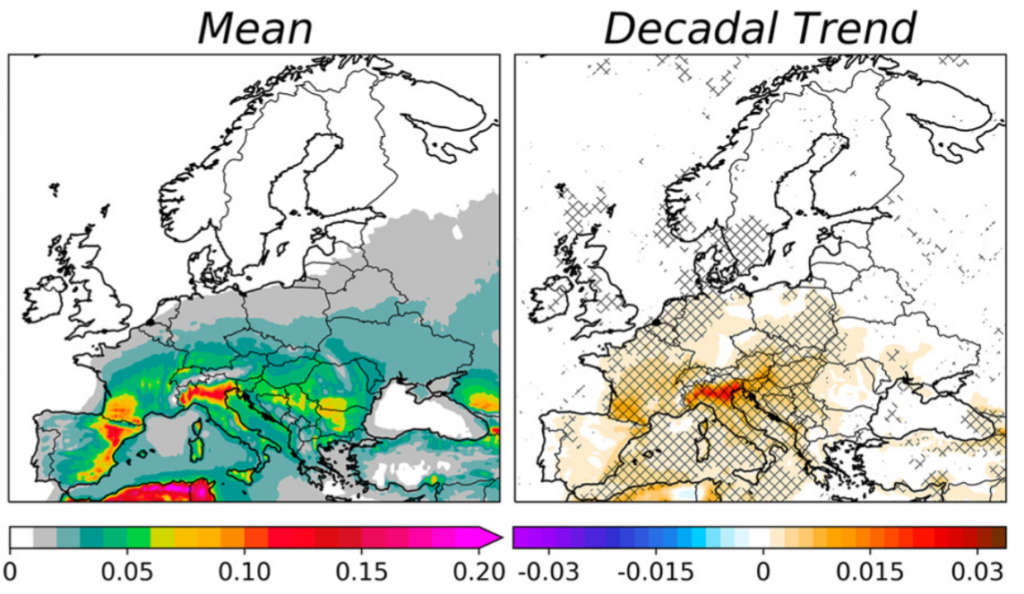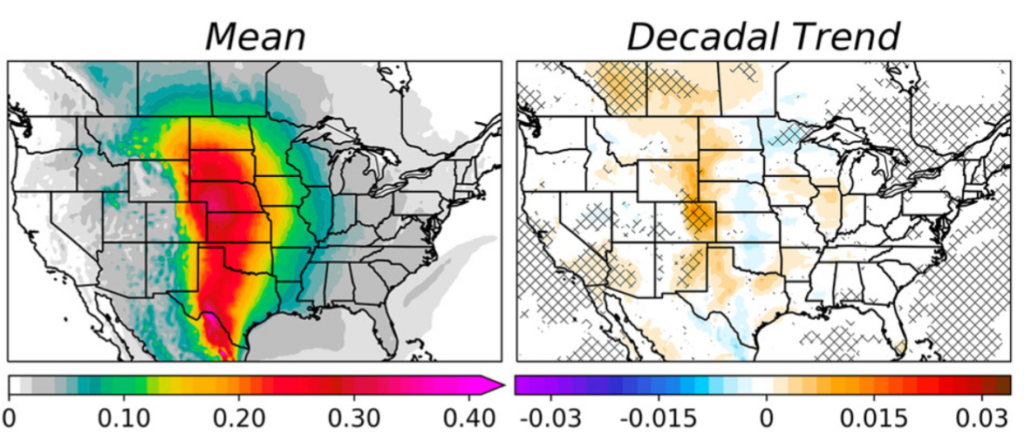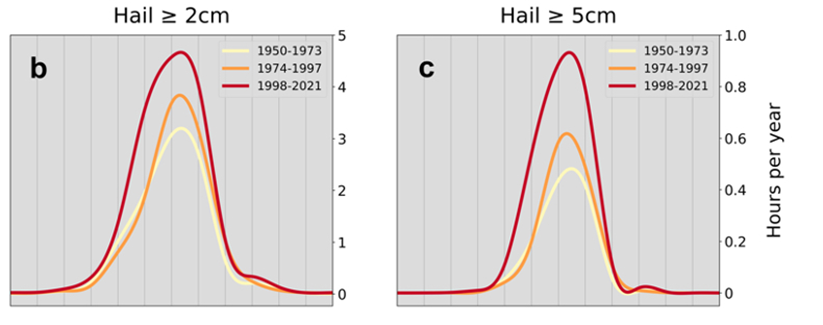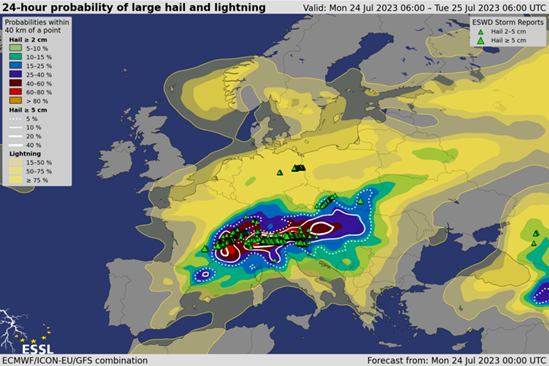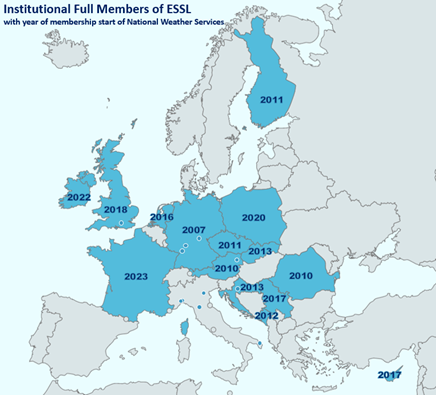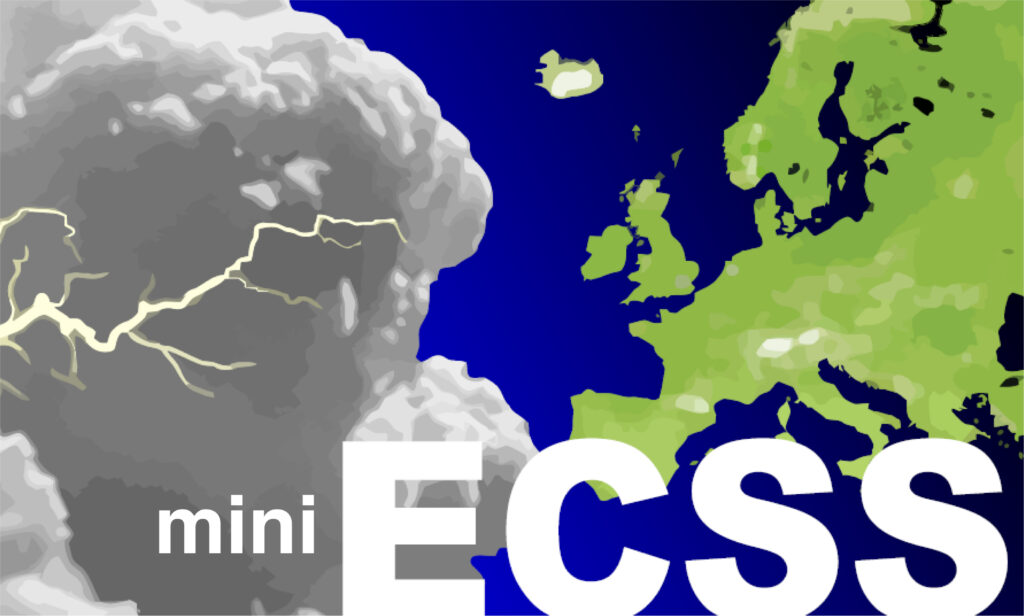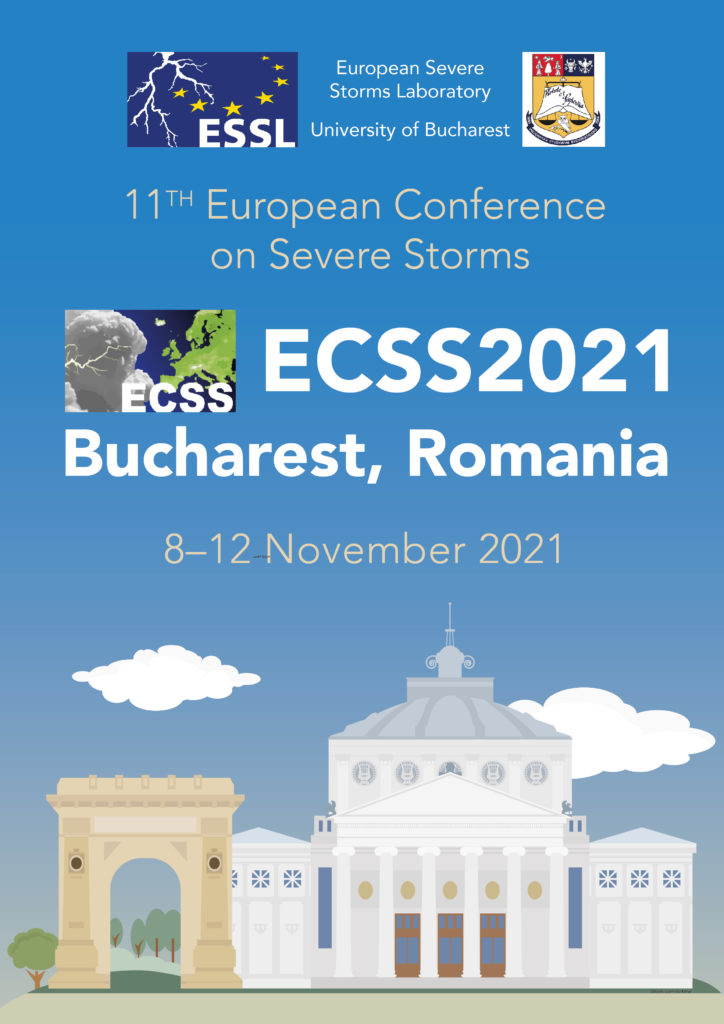Click here for a printer-friendly pdf document.
The European Severe Storms Laboratory (ESSL, https://essl.org) is looking for a
Researcher (75 – 100 %)
for two years initially
based
in Germany, to support its work in the research project CHECC on severe
thunderstorms and climate change (see below) at 75% of a full position.
Optionally,
other tasks involving programming work in support of the ESSL Testbeds may be
taken over. In this case, the researcher can be hired full-time. We are looking
for someone who can start in the coming months, or at the latest by September
2021.
CHECC
We are looking for support of the project “Convective Hazard Evolution under Climate Change” (CHECC, see: https://www.essl.org/cms/checc/), part of the German research programme ClimXtreme (see: https://www.climxtreme.net/) which includes several research groups at various universities. The primary goal of CHECC is to find out if effects of climate change on the occurrence of (severe) thunderstorms in Europe can be detected in reanalyses and climate models. This is done by developing and applying statistical methods with a strong basis in physics. Tasks of the researcher will include:
- Evaluating
the role of changes in synoptic scale weather patterns on severe thunderstorm
probability
- Evaluating
changes in the variability of weather conditions supportive of severe
thunderstorms
- Reporting
on the research in peer-reviewed scientific journals
ESSL
Testbed
The
ESSL Testbed is a collection of one-week events, which (in non-corona times)
takes place in person at ESSL premises in Wiener Neustadt, Austria. There,
forecasters and developers work together to evaluate novel products developed
to support the forecasting and warning process. They do this by using these
products based on satellite, radar, and numerical weather prediction data to
make forecasts in a quasi-operational setting. ESSL seeks someone to help
develop and maintain the ESSL Weather Data Displayer, which is an interactive
web page for displaying meteorological data.
Profile
The
employee needs to be a resident in or moving to Germany as this is a
prerequisite by the funder of the CHECC project. The current ESSL team is
spread across many European countries including Germany, Austria, the
Netherlands, Romania, and Croatia and often works remotely. The employee do
their work through teleworking from Germany. In collaboration with the
Institute of Meteorology of the Freie Universität Berlin, we offer a workplace
at the Institute, which is the location of the other current ESSL CHECC
researcher. It is expected that the new employee will coordinate with him and
with other ESSL colleagues in weekly video meetings and will meet in person
approximately every two to three months, in Berlin, Wiener Neustadt, or another
agreed location. In case work in support of the ESSL Testbed is done, it is
expected that the employee will take part in person in the Testbed in Wiener
Neustadt for at least one week in June and/or July.
ESSL
offers this position for a two-year period, limited by the duration of the
funding for the CHECC project. Provided that subsequent funding is found, the
employment may be continued beyond the two-year period, and could be made
permanent. As a researcher at ESSL, you will be part of a small international
team of ESSL which has become an important centre of competence in Europe with
regard to severe convection. You will be able to contribute to the various
other activities carried out and take part in ESSL courses taught by experts in
the field.
We are looking for a person who has a Master or Ph.D. degree or equivalent in meteorology, physics, or a related discipline, who is enthusiastic about severe weather research. A well-organized, reliable, and communicative character is expected. For graduates of a Master’s degree, the work done for the CHECC project can be part of a Ph.D. degree (dr. rer. nat.) pursued at the Freie Universität Berlin or another university.
We require:
- Good
command of the English language in speaking and writing
- An
M.Sc. or Ph.D. degree in physics, meteorology, geophysics, mathematics or
similar
- An
interest in (severe) convective storms
- Experience
with programming using languages such as Python, R, or similar
Beneficial, but
not essential, are:
- Having
published in peer-reviewed literature
- Having
done prior research work related to atmospheric circulation patterns
- Knowledge
of the German language or willingness to learn German
- Some
knowledge of web-programming (HTML, PHP, JavaScript)
- An
interest in weather forecasting
The salary level
is oriented at the German TvöD salary table, level E 13. In case the employee
with carry out the research work (at 75%), an indicative net salary is around €
2000/month, depending on the applicable tax class according to German law and
other factors. In case the employee will
also contribute to the Testbed and work full time (100%), an indicative net
salary is € 2500/month.
With reference
to ESSL’s diversity policy, we especially encourage women and minorities to
apply. We are looking forward to receiving your application including a
motivation letter and a curriculum vitae until February 28th 2021 by
e-mail to Pieter Groenemeijer: pieter.groenemeijer@essl.org.



